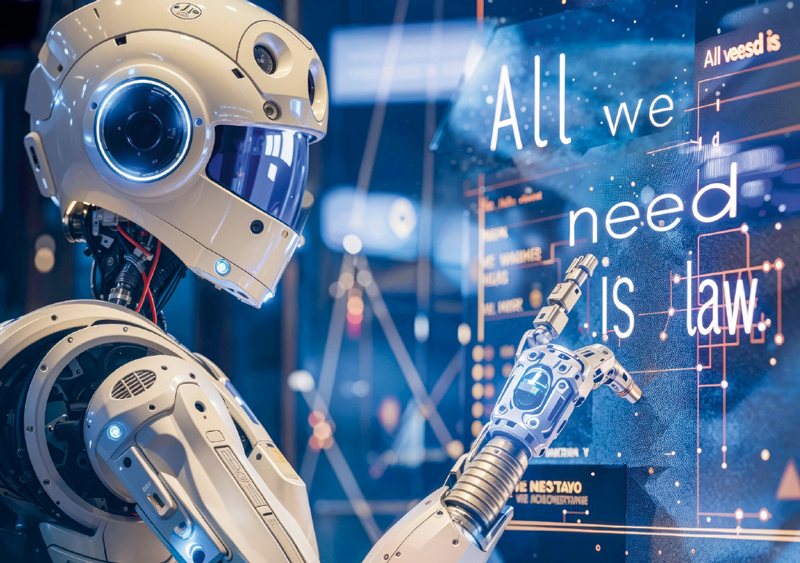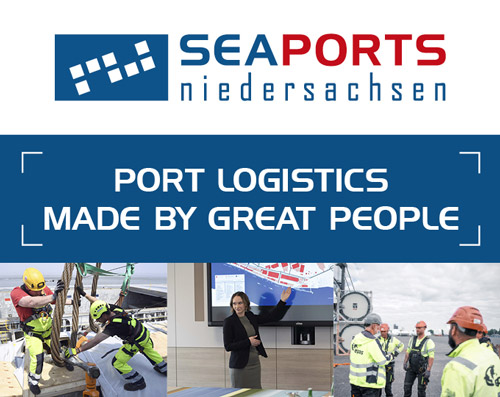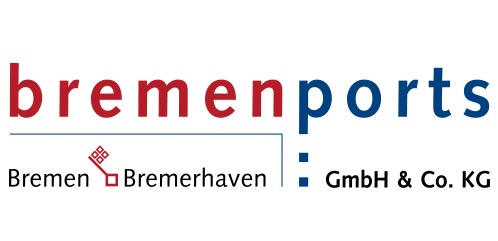Does it make more sense for promising business communication to rely on good old personal contact, such as in meetings and at trade fairs, or should companies focus more on digital communication? And what challenges does the use of artificial intelligence (AI) as a possible tool for digital communication pose? Experts from BLG LOGISTICS, Kühne+Nagel, KPMG and the German Research Centre for Artificial Intelligence provide insights into their communication experiences and outlooks on possible developments.
According to Straube, artificial intelligence (AI), in particular, will change digital communication in the long term – across all industries. “A lot of things are in flux right now, which make them new territory for us,” he adds. “This is why we have to learn constantly and examine how we use this new technology closely. We need to ensure that we exchange real information profitably and that processes are not hindered or even manipulated by increasingly realistic-looking misinformation.” He sees great future potential in AI in the development of what are known as generative AI models, such as ChatGPT. The first models that can process and generate new content in the form of audio, video and text have already been published in this area. At DFKI, for example, this technology is already being used to compensate for sensor failure or poor visibility in various video sequences during under-water recordings.
A completely different learning path
With the current AI debate in mind, Straube emphasises that AI systems are based on a completely different learning path than humans. “As human beings, we learn and develop our own language during this experiential process,” he states. “Conversely, AI and robotic systems are equipped with language skills from the outset and simulate knowledge of the world without having had any real experience first. We should never lose sight of this.”
Consequently, this means that parts of AI-generated answers may well be invented and only appear to be correct. But how can the veracity of this information be verified reliably? According to Straube, either by the user themselves, by other human experts or by other AI algorithms that check the existing AI systems, in the same way that artificial intelligence simulates cyberattacks to check whether the AI-based defence strategy is efficient enough. This is an idea that still takes some getting used to in practice, however.

“It’s possible to lose that interpersonal element when interacting digitally.”
Sirko Straube, Research & Administrative Manager at DFKI
“The majority of companies aren’t ready yet”
Kuehne+Nagel (KN) also recognises the growing importance of digital communication. “We’ve been using technologies like this in business communication to connect with our customers for many years now – and we’re constantly expanding them,” explains Niklas Sundberg, Chief Digital Officer at KN. At the same time, he emphasises the importance of meeting people face to face, for example by seeking out personal interactions at trade fairs. “We’ve now entered a new era of AI,” Sundberg adds with regard to the digital transformation. “We need a lot of data to harness its potential successfully. But this can’t just be any old data. It needs to be data that’s well structured and usable.” In this context, he points out a study by Gartner, an American market research company, that only four per cent of the companies surveyed currently believe that their data is ready for AI. “This means that the majority of companies aren’t ready to integrate artificial intelligence into their business models yet,” he continues.
This is precisely why, for him, accelerating their digital transformation is an important requirement for companies in the logistics sector, as doing so will enable them to activate new business models, offer a better service and stay competitive in the market. “We’re currently in the middle of our cloud transformation, with the aim of modernising and migrating most of our applications to the cloud,” he adds, with his own company in mind. “Any new business functions we introduce must be installed in the cloud and not on the premises.” AI is also already being used successfully in-house, for example to predict realistic lead times for shipments and optimise customer support queries. Furthermore, AI solutions that predict customer churn more accurately are currently being tested.
“However, the limits of what we can do with AI ultimately depend on the data available and its quality,” Sundberg indicates. In his view, society is not only facing an ethical discussion but, primarily, an environmental one. “We also need to be mindful of the impact AI has on our environment – operating and training AI models is very resource-intensive; you need a lot of electricity and water,” he explains. “I hope that the environmental impact of data centres will be discussed more in future, within the context of the energy transition, and that awareness of this will grow.” In general, important to this process is finding an overall consensus in society so as to harmonise the limits of artificial intelligence because, as Sundberg suggests, not everything has to be supported by AI.

“We need to be mindful of the impact AI has on our environment.”
Niklas Sundberg, Chief Digital Officer at Kühne+Nagel

Four out of five decision-makers have an AI strategy
For Ulrich Balke, Director, Markets at KPMG AG Wirtschaftsprüfungsgesellschaft, there seems to be a real sense of optimism in Germany when it comes to digitalisation and artificial intelligence. “According to our current ‘Generative AI in the German economy’ study, four out of five decision-makers state that they already have a strategy for generative AI in their company or are currently working on one,” he explains. “A good two-thirds have proof of concepts in the pipeline for the next twelve months to discuss the benefits of AI for their company or have already implemented initial use cases.” A fundamental prerequisite for the successful, structural use of artificial intelligence is that companies have embraced digitalisation. “Otherwise, the data quality won’t be sufficient,” Balke adds. “Plus, I’m sure customers will expect AI-supported processes from their logistics service providers very soon so that newer business models can also work.” “The trusting, personal dialogues will still be there,” he nonetheless clarifies. “That’s what defines our industry.”
His colleague Jan Stoelting, Partner in the Consulting division at KPMG AG Wirtschafts-prüfungsgesellschaft, presents a key advantage of AI. “Due to advanced algorithms and machine learning,” he explains, “AI can contribute to the rapid evaluation of Big Data and recognise patterns that human analysts can’t see.” Among other things, this enables improved business process forecasting as well as detecting early bottlenecks and trends.
Where the use of AI is concerned, he and Sirko Straube from DFKI see various options for verifying the authenticity of images and texts. One of these is the use of digital signatures. This cryptographic method makes it possible to verify the identity of the sender and guarantee that documents and files have not been manipulated by third parties. Another option is the use of watermarks embedded in images or texts. Special software tools could also be used to check the authenticity of digital content, for example by analysing the metadata of a document or file and flagging up possible manipulation. In Stoelting’s opinion, we also have a personal responsibility to carry out regular fact checks in our daily communication and to be proactive in scrutinising information. For both texts and photos, this would mean asking questions such as: “Has the source been quoted correctly? Can it be trusted?” “Is the information up to date?” “Who took the picture? Where and when? Are there any signs that it might have been edited?”

“The trusting, personal dialogues are what define our industry.”
Ulrich Balke, Director, Markets at KPMG

“Even as the digitalisation of communication progresses, ethical conditions remain relevant.”
Jan Stoelting, Partner in the Consulting division at KPMG
Not without a digital communication ethic
However, Stoelting calls for a digital communication ethic as a basic prerequisite for successful business communication in the future, focusing, in particular, on social media. “The challenge is to satisfy these ethical requirements consistently,” he states. “Digital communication allows people to hide behind anonymity and maintain a certain spatial and inter-personal distance, which can presumably have advantages in terms of a more open and honest sharing of opinions and content. On the other hand, however, this can also lead to more reckless behaviour, as people are less aware of the consequences of their actions,” he adds.
He also emphasises that ethics and digital communication are, as he puts it, “not in natural competition” with each other. However, cooperation requires that the interlocutors develop a common ethical understanding that is adapted on the basis of recognised, binding rules of society and that digital communication is seen as another level of interpersonal communication. “Even as the digitalisation of communication progresses, ethical conditions remain relevant and must be emphasised even more in order to avoid misunderstandings,” he concludes.

“The security issues will be resolved”
For Jakub Piotrowski, CIO at BLG LOGISTICS, the greatest possible communicative benefit can be achieved through the targeted interplay between artificial intelligence and personal contact. “AI is particularly useful for routine activities such as research, summarising texts and in the helpdesk, where chatbots can collect information and troubleshoot,” he states. “It improves the efficiency and accuracy of solutions. Nevertheless, personal contact remains essential, especially where emotions play a role, such as in the customer initiation process.” However, AI can also support personal communication, for example in the development of rationale, concepts and texts.
BLG LOGISTICS is already using artificial intelligence in a variety of ways, including in the “KITE” research project, which uses an AI forecasting process to facilitate fewer empty runs, thus reducing transport emissions and making lorry traffic more sustainable. As part of a proof of concept that recognises potential candidates early on in the application process and establishes initial contact, the company also tested an AI chatbot on the Geiselwind location’s website. Other areas in which this technology is already being used at BLG include intelligent document management and AI optical image recognition.
For Piotrowski, information security and data protection pose the greatest challenges when dealing with AI. Here, he primarily sees the need for laws and regulations such as the EU AI Act or the Artificial Intelligence Cloud Service Compliance Criteria Catalogue (AIC4) from the Federal Office for Information Security to formulate appropriate framework conditions for AI. “Against this backdrop, we need to focus intensively on data protection and compliance,” he says. “Among other things, clear AI governance and employee training are essential modules.” With this in mind, BLG LOGISTICS began training the first 30 in-house test users in generative AI this summer. “These people will then serve as multipliers for a large-scale introduction,” adds Piotrowski.
In the long term, he is certain that the future will be shaped, in particular, by specialised AI systems that efficiently solve typical problems in the sector similarly to specialist logistics service providers. “It’s like the initial scepticism towards cloud computing,” he explains, drawing an interesting comparison to a past issue. “Just as it was then, the necessary security issues will also be resolved in terms of AI as soon as the technology becomes better known and trust increases.” (bre)

“AI improves the efficiency and accuracy of solutions.”
Jakub Piotrowski, CIO at BLG LOGISTICS





